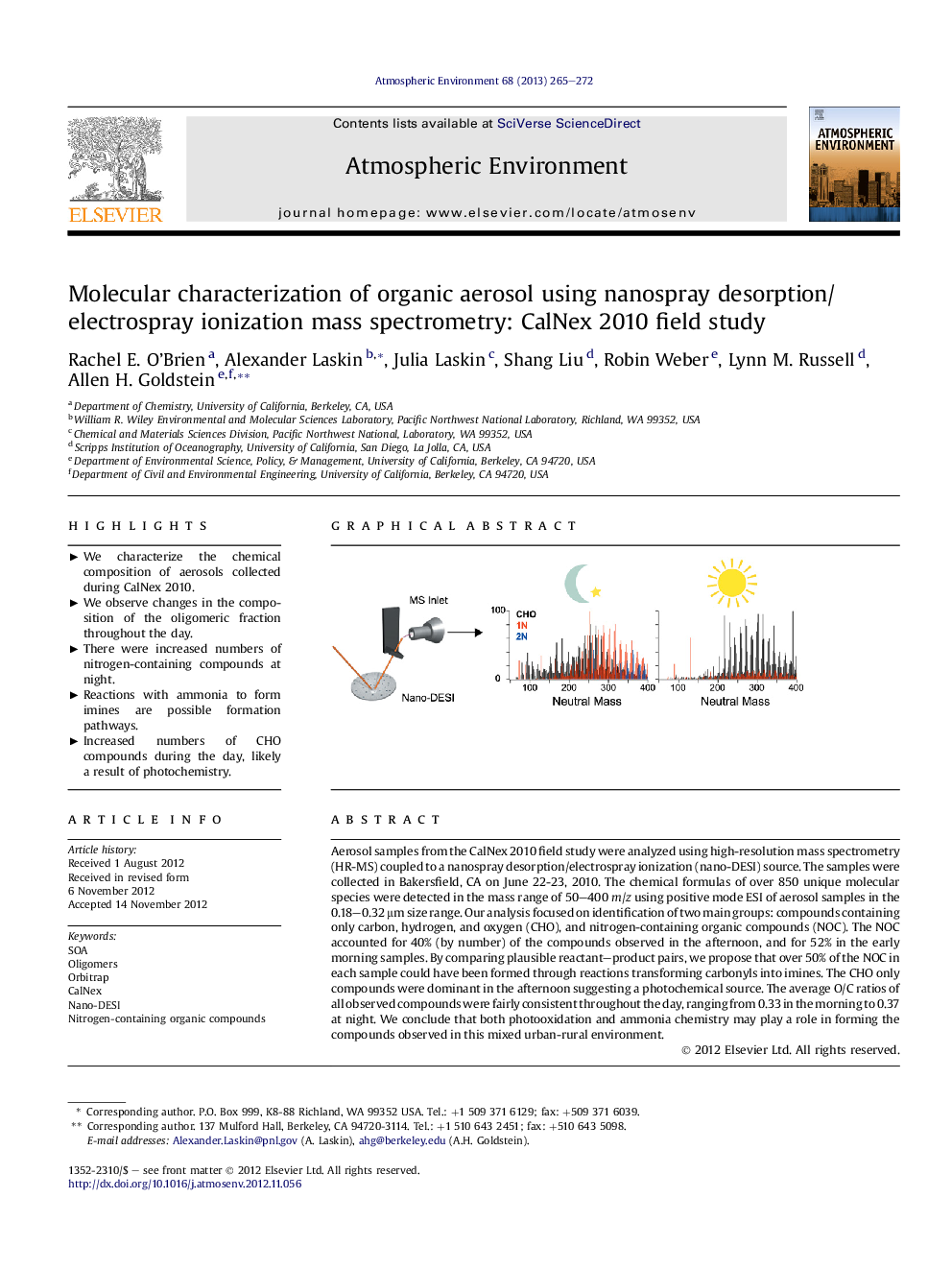| کد مقاله | کد نشریه | سال انتشار | مقاله انگلیسی | نسخه تمام متن |
|---|---|---|---|---|
| 4438448 | 1620403 | 2013 | 8 صفحه PDF | دانلود رایگان |

Aerosol samples from the CalNex 2010 field study were analyzed using high-resolution mass spectrometry (HR-MS) coupled to a nanospray desorption/electrospray ionization (nano-DESI) source. The samples were collected in Bakersfield, CA on June 22-23, 2010. The chemical formulas of over 850 unique molecular species were detected in the mass range of 50–400 m/z using positive mode ESI of aerosol samples in the 0.18–0.32 μm size range. Our analysis focused on identification of two main groups: compounds containing only carbon, hydrogen, and oxygen (CHO), and nitrogen-containing organic compounds (NOC). The NOC accounted for 40% (by number) of the compounds observed in the afternoon, and for 52% in the early morning samples. By comparing plausible reactant–product pairs, we propose that over 50% of the NOC in each sample could have been formed through reactions transforming carbonyls into imines. The CHO only compounds were dominant in the afternoon suggesting a photochemical source. The average O/C ratios of all observed compounds were fairly consistent throughout the day, ranging from 0.33 in the morning to 0.37 at night. We conclude that both photooxidation and ammonia chemistry may play a role in forming the compounds observed in this mixed urban-rural environment.
Figure optionsDownload high-quality image (127 K)Download as PowerPoint slideHighlights
► We characterize the chemical composition of aerosols collected during CalNex 2010.
► We observe changes in the composition of the oligomeric fraction throughout the day.
► There were increased numbers of nitrogen-containing compounds at night.
► Reactions with ammonia to form imines are possible formation pathways.
► Increased numbers of CHO compounds during the day, likely a result of photochemistry.
Journal: Atmospheric Environment - Volume 68, April 2013, Pages 265–272